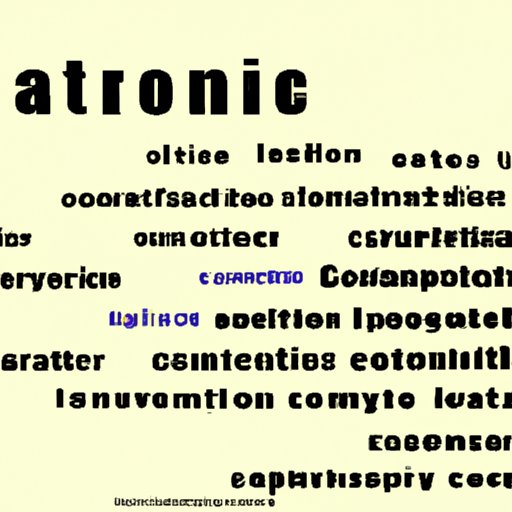Introduction
Connotation is a powerful tool used in literature to create meaning and evoke emotion. It refers to the associations and implications that words have beyond their literal definitions. By understanding the power of connotation, authors can use language to create vivid images, craft compelling stories, and explore complex themes. In this article, we’ll explore what connotation is and how it is used in literary texts.
Exploring the Power of Connotation in Literary Texts
In literature, connotation is used to add layers of meaning to words and phrases. It can be used to suggest certain emotions or ideas without explicitly stating them. For example, when an author describes a character as “sly,” they are implying that the character is cunning and deceptive, even though the word itself simply means “cautious.”
Examining the Role of Connotations in Fiction Writing
When writing fiction, authors often rely on the power of connotation to create memorable characters and captivating plot lines. For example, if an author wants to create a villain who is cruel and ruthless, they might describe him as “heartless” rather than “evil.” This type of language paints a vivid picture of the character’s personality and leaves a lasting impression on the reader.
Analyzing the Impact of Connotation on Character Development
Connotation can also be used to develop characters and shape the story. For example, if an author wants to show that a character is kind and generous, they might use words like “thoughtful” or “compassionate” to describe them. This type of language helps readers understand the character’s motivations and makes them more relatable.

How to Use Connotation to Create Meaningful Literary Works
To create meaningful literary works, authors must understand the power of connotation and use it effectively. Here are some tips for crafting effective connotative images and phrases:
Unpacking the Symbolic Meanings of Connotation in Literature
The first step in using connotation effectively is to understand the symbolic meanings of words. To do this, authors should think about the different connotations associated with a word or phrase and consider how they can be used to convey a particular emotion or idea. For example, the phrase “the dark night” has a different connotation than “the starry night,” and each one can be used to create a different atmosphere in a story.
Tips on Crafting Effective Connotative Images and Phrases
Once authors have identified the connotations associated with a word or phrase, they can use it to create powerful images and phrases. To do this, authors should focus on using vivid language, such as metaphors and similes, to paint a clear picture in the reader’s mind. They should also pay attention to the tone of their writing and use language that evokes the desired emotion.
Conclusion
In conclusion, connotation is a powerful tool used in literature to create meaning and evoke emotion. By understanding the power of connotation, authors can use language to create vivid images, craft compelling stories, and explore complex themes. With the right techniques, authors can use connotation to create meaningful and powerful works of literature.
(Note: Is this article not meeting your expectations? Do you have knowledge or insights to share? Unlock new opportunities and expand your reach by joining our authors team. Click Registration to join us and share your expertise with our readers.)
